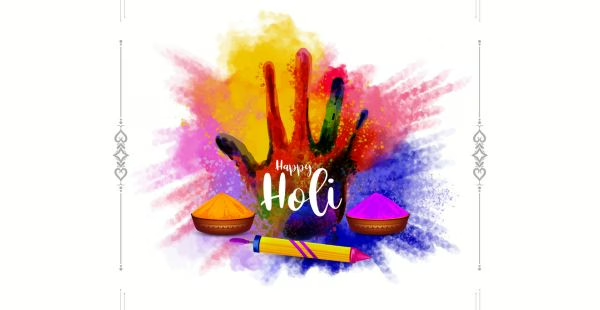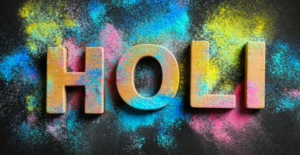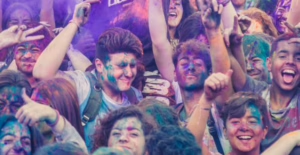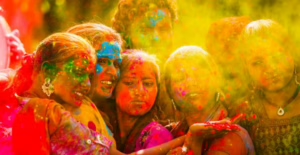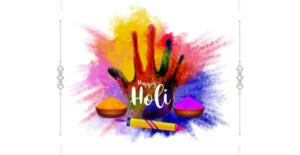
Why is Holi Celebrated in India? Holi, the festival of colors, is one of the most vibrant and joyous festivals celebrated in India. Known for its exuberant celebrations, Holi marks the arrival of spring and is a time for people to come together, forget past grievances, and spread love and happiness. This festival is deeply rooted in Hindu mythology, symbolizing the victory of good over evil and the spirit of unity. In this blog, we will explore the history of Holi, its significance, and the traditions of Holi to understand why it is such an important festival in India.
History of Holi
Holi has been celebrated in India for centuries, and its origins can be traced back to Hindu mythology. Several legends are associated with this festival, the most prominent being the story of Prahlad and Holika, and the divine love of Radha and Krishna.
The Legend of Prahlad and Holika
The most well-known story behind Holi is that of Prahlad and Holika. According to Hindu mythology, there was a powerful but arrogant demon king named Hiranyakashipu. He wanted everyone in his kingdom to worship him as a god. However, his own son, Prahlad, was a devoted follower of Lord Vishnu and refused to obey his father’s orders. This enraged Hiranyakashipu, and he decided to kill Prahlad.
Hiranyakashipu’s sister, Holika, had a boon that made her immune to fire. She tricked Prahlad into sitting with her on a pyre, intending to burn him alive. However, due to divine intervention, Holika was burnt to ashes while Prahlad remained unharmed. This event symbolizes the triumph of good over evil and is commemorated on the eve of Holi with the ritual of Holika Dahan (bonfire).
The Love of Radha and Krishna
Another popular legend associated with Holi is the love story of Lord Krishna and Radha. It is believed that Krishna, who had a dark complexion, was worried about Radha’s fair skin. His mother, Yashoda, playfully suggested that he apply color to Radha’s face. This playful act became a tradition, and the festival of colors was born. Even today, Holi is celebrated with great enthusiasm in Mathura and Vrindavan, places associated with Krishna’s childhood.
Significance of Holi
Holi is much more than just a festival of colors; it has cultural, social, and spiritual significance.
The Victory of Good Over Evil
As illustrated by the story of Prahlad and Holika, Holi signifies the triumph of righteousness over wickedness. The burning of Holika represents the end of evil forces, reinforcing the belief that truth and devotion always prevail.
The Arrival of Spring
Holi marks the end of winter and the arrival of spring. It is a time of renewal and rejuvenation when people celebrate nature’s bounty and the blooming of new flowers. This season of abundance is reflected in the joyful celebrations of the festival.
Strengthening Social Bonds
Holi breaks down societal barriers and fosters unity. People from all backgrounds come together to play with colors, sing, and dance. It is a time when grudges are forgotten, and relationships are strengthened. The festival encourages inclusivity and togetherness.
A Celebration of Love and Joy
The playful application of colors represents joy and harmony. It is a time for laughter, music, and fun, where people of all ages participate in the revelry.
Colors of Holi
Holi is famously known as the festival of colors. The colors of Holi hold great significance, each symbolizing different aspects of life and emotions. Red represents love and fertility, blue is associated with Krishna, green symbolizes new beginnings, and yellow represents knowledge and learning. These colors bring people together in a celebration of happiness and unity.
Traditions and Celebrations
Holi is celebrated with great enthusiasm across India, with each region adding its own unique touch to the festivities.
Holika Dahan (The Bonfire Ritual)
On the night before Holi, people gather to light bonfires, symbolizing the burning of Holika and the victory of good over evil. This ritual, known as Holika Dahan, is accompanied by singing and dancing.
Playing with Colors
The most famous aspect of Holi is the throwing of colors. On the main day, people smear each other with powdered colors (gulal) and splash water-filled balloons. Water guns (pichkaris) are used to drench friends and family in colored water, making the celebration even more fun.
Holi Special Sweets and Drinks
Holi is incomplete without delicious treats. Holi special sweets like Gujiya, a sweet dumpling filled with khoya and dry fruits, is a popular delicacy. Thandai, a special drink made with milk, dry fruits, and spices, is also enjoyed during the festival. In some places, thandai is infused with bhang (a cannabis-based preparation) to enhance the festive spirit.
Music and Dance
Holi is a time for lively music and dance. People gather in communities to sing folk songs, play drums, and dance to traditional as well as Bollywood Holi-themed songs. The energy and enthusiasm are infectious, making it a festival that everyone enjoys.
Special Regional Celebrations
Different regions in India have unique ways of celebrating Holi. Some of the most famous celebrations include:
- Lathmar Holi in Barsana and Nandgaon: Women playfully beat men with sticks, and men try to shield themselves while teasing back. This tradition is inspired by the playful interactions between Radha and Krishna.
- Holi in Mathura and Vrindavan: These cities, closely associated with Krishna, celebrate Holi for an extended period, with grand processions and unique rituals.
- Shantiniketan Basanta Utsav: In West Bengal, Holi is celebrated as Basanta Utsav (Spring Festival) with cultural performances, poetry, and graceful dances.
- Royal Holi in Rajasthan: Rajasthan’s royal families celebrate Holi with grand feasts, processions, and traditional rituals.
Holi Beyond India
Holi is not only celebrated in India but also in many parts of the world. Countries with significant Indian populations, such as Nepal, Bangladesh, the United States, Canada, the United Kingdom, and Australia, host grand Holi celebrations. In recent years, Holi has gained international recognition, with color festivals being organized in different parts of the world.
Holi is a festival that goes beyond just playing with colors; it carries deep historical, cultural, and spiritual significance. It reminds us of the power of faith, the joy of togetherness, and the beauty of love. Whether through the burning of Holika, the vibrant colors, or the delicious sweets, Holi is a celebration of life itself. As people come together to rejoice in this festival, Holi continues to be a symbol of happiness, unity, and new beginnings.

